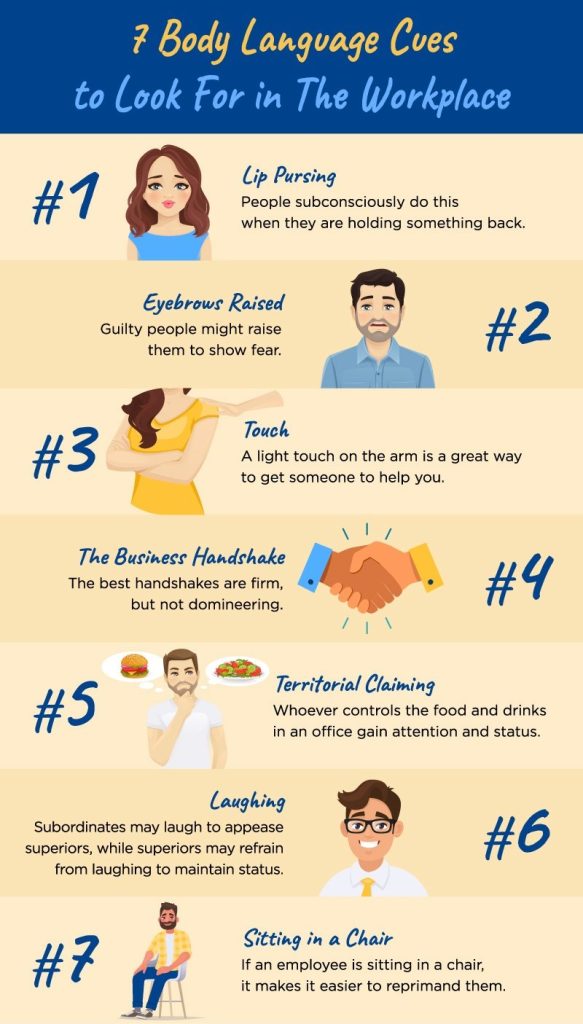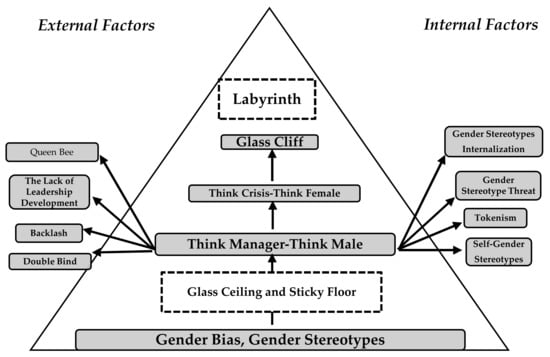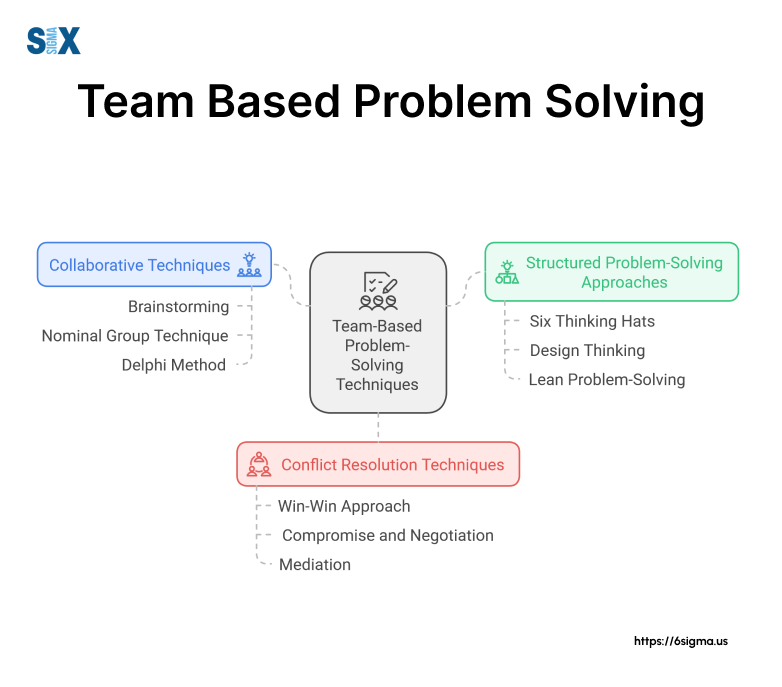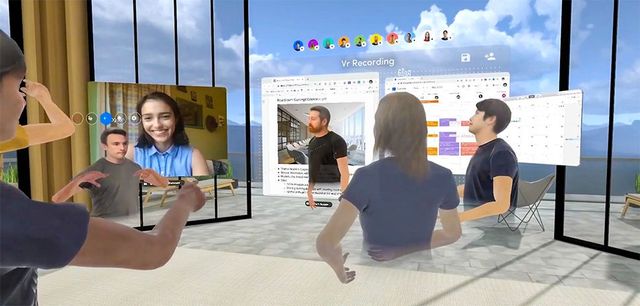Navigating the Hidden Currents: A Modern Guide to Office Politics
Understanding the landscape of workplace power dynamics in today's professional environment
I've spent years observing how office politics shapes careers and organizational cultures. In this guide, I'll break down the reality of political behaviors in modern workplaces, help you develop political intelligence without compromising your integrity, and explore how we can collectively build healthier work environments.
The Landscape of Office Politics Today
When I think about office politics, I've come to realize it's far more nuanced than the backstabbing stereotypes often portrayed in media. In today's professional world, office politics represents the complex web of relationships, power dynamics, and informal influence that exists alongside formal organizational structures.

The modern workplace contains visible and invisible power structures that shape daily interactions
What's fascinating is how universal this phenomenon is. Whether I'm consulting with a tech startup, a government agency, or a manufacturing plant, I consistently observe political dynamics at play. They affect everyone from entry-level employees to C-suite executives, though the stakes and manifestations may differ.
Key Statistics on Office Politics
Data synthesized from multiple workplace studies on the effects of political environments
The evolution of work arrangements has added fascinating new dimensions to office politics. In my research on remote and hybrid environments, I've observed how political dynamics don't disappear—they transform. Digital communications create new arenas for political maneuvering, from who gets included in virtual meetings to whose ideas receive attention in chat threads.
Perhaps the most challenging aspect of office politics is distinguishing between healthy relationship building and harmful political games. I find this distinction crucial: strategic networking and understanding organizational dynamics can be valuable professional skills, while manipulation and self-promotion at others' expense damages the entire workplace ecosystem.
flowchart TD
A[Office Politics Spectrum] --> B[Constructive Politics]
A --> C[Destructive Politics]
B --> D[Strategic Networking]
B --> E[Organizational Awareness]
B --> F[Ethical Influence]
C --> G[Manipulation]
C --> H[Information Hoarding]
C --> I[Undermining Others]
style A fill:#FF8000,stroke:#E67300,color:white
style B fill:#66BB6A,stroke:#4CAF50,color:white
style C fill:#EF5350,stroke:#F44336,color:white
Recognizing Political Behaviors in the Workplace
In my years observing organizational dynamics, I've come to recognize that office politics exists on a spectrum. At one end, we have constructive political behaviors that help move organizations forward; at the other, destructive tactics that erode trust and collaboration.

Political behaviors often manifest in subtle ways during meetings and group interactions
Common Political Tactics I've Observed:
- Information gatekeeping: Controlling access to important information to maintain power
- Coalition building: Creating informal alliances to advance specific agendas
- Credit claiming: Taking disproportionate credit for team successes
- Impression management: Carefully curating one's image to gain favor with decision-makers
- Strategic visibility: Ensuring one's contributions are noticed by the right people
- Informal influence: Leveraging relationships to affect decisions outside formal channels
What I find particularly interesting is how formal authority structures often differ from informal influence networks. The organizational chart tells only part of the story. In many organizations I've consulted with, the most influential people aren't necessarily those with the highest titles.
Formal Authority vs. Informal Influence
graph TD
A[CEO] --> B[VP Operations]
A --> C[VP Marketing]
A --> D[VP Technology]
B --> E[Operations Manager]
C --> F[Marketing Manager]
D --> G[IT Manager]
H[Informal Power Network] -.-> F
H -.-> G
H -.-> J[Executive Assistant]
J -.-> A
subgraph "Formal Authority Structure"
A
B
C
D
E
F
G
end
subgraph "Informal Influence Network"
H
J
end
style A fill:#FF8000,stroke:#E67300,color:white
style H fill:#FF8000,stroke:#E67300,color:white
style J fill:#FF9933,stroke:#E68A2E,color:white
Formal organizational structures often exist alongside powerful informal influence networks
One of the most valuable skills I've developed is the ability to distinguish between politically-motivated actions and genuine collaboration. I look for key indicators: Is information shared freely or selectively? Are decisions made transparently or behind closed doors? Do people give credit generously or hoard recognition?
Different organizational cultures foster different types of political behaviors. In my case study research across industries, I've observed how competitive, high-stakes environments tend to amplify zero-sum political tactics, while collaborative cultures with psychological safety encourage more constructive political behaviors focused on organizational benefit rather than individual gain.
The challenge in today's workplace communication landscape is developing the awareness to recognize these dynamics without becoming cynical or paranoid. Political intelligence begins with this awareness—seeing the currents that shape decisions and relationships without assuming negative intent.
Developing Political Intelligence Without Compromising Integrity
Throughout my career, I've come to view political intelligence not as a necessary evil but as an essential professional skill that can be developed ethically. Political intelligence is the ability to read, navigate, and influence organizational dynamics while maintaining your integrity.

Political intelligence involves reading social dynamics while maintaining ethical standards
Effective workplace communication lies at the heart of political intelligence. I've found that mastering clear, persuasive communication that acknowledges different perspectives while maintaining transparency builds influence without manipulation. This approach allows you to advocate for your ideas while respecting organizational values.
When I need to craft particularly important messages in politically complex situations, I use PageOn.ai's Vibe Creation tool to ensure my communication strikes the right tone—professional and persuasive without appearing calculating or manipulative. The ability to rise above political noise with clear, value-focused messaging is invaluable.
Relationship Mapping: Understanding Organizational Influence
graph TD
A[You] --> B[Direct Manager]
A --> C[Cross-Functional Partners]
A --> D[Team Members]
A --> E[Stakeholders]
B --> F[Senior Leadership]
C --> G[Resource Gatekeepers]
D --> H[Informal Leaders]
E --> I[Decision Makers]
F -.-> I
G -.-> I
H -.-> B
subgraph "Primary Network"
A
B
C
D
E
end
subgraph "Secondary Network"
F
G
H
I
end
style A fill:#FF8000,stroke:#E67300,color:white
style I fill:#FF8000,stroke:#E67300,color:white
Visualizing your relationship network helps identify influence pathways and alliance opportunities
One technique I've found particularly valuable is relationship mapping—creating a visual representation of the formal and informal networks in your organization. This practice helps identify key decision-makers, influencers, and potential allies. By understanding these dynamics, you can build strategic partnerships based on mutual benefit rather than manipulation.
Ethical Approaches to Building Influence
| Strategy | Ethical Application | Unethical Version to Avoid |
|---|---|---|
| Information Sharing | Transparently sharing relevant information to help others succeed | Hoarding information to maintain power or selectively sharing to manipulate |
| Network Building | Forming genuine connections based on shared interests and mutual support | Creating exclusive cliques that isolate others or using people purely for gain |
| Visibility | Appropriately highlighting team accomplishments and giving credit | Self-promotion at others' expense or taking credit for others' work |
| Persuasion | Using data and compelling narratives to influence decisions | Manipulating information or using pressure tactics to force outcomes |
The key distinction I emphasize when coaching professionals is that political intelligence isn't about winning at others' expense—it's about advancing organizational goals while supporting your career growth and helping others succeed. This win-win-win mindset transforms political awareness from something potentially toxic into a force for positive change.
Transforming Political Challenges into Professional Opportunities
I've found that reframing office politics as organizational awareness can transform how we approach workplace dynamics. Rather than viewing politics as something to avoid, I see it as valuable information about how decisions are made, what's valued, and where opportunities exist.

Strategic visibility involves showcasing work through clear, data-driven presentations
Strategic visibility is a concept I coach clients on frequently. It's not about self-promotion but rather ensuring your contributions and your team's work are appropriately recognized. This visibility creates opportunities while building your professional reputation.
Strategies for Strategic Visibility
- Document achievements: Keep a running record of accomplishments and their business impact
- Share knowledge: Offer insights and expertise in meetings and company forums
- Volunteer strategically: Take on high-visibility projects aligned with your strengths
- Communicate outcomes: Share results of initiatives in clear, concise formats
- Amplify others: Recognize teammates' contributions, building reciprocal support
High-stakes presentations often involve complex political dynamics. I prepare for these by mapping stakeholder interests beforehand, anticipating potential resistance, and framing proposals to align with organizational priorities. Using PageOn.ai's AI Blocks helps me create compelling visual narratives that objectively showcase data and ideas, reducing the influence of political biases in decision-making.
Resilience to Political Setbacks
Comparison of high vs. low resilience responses to political setbacks in the workplace
Developing resilience to political setbacks has been crucial in my own career. When faced with politically motivated opposition or setbacks, I've learned to separate the personal from the professional, seek feedback from trusted allies, and focus on long-term goals rather than short-term wins.
Perhaps most importantly, I've found that maintaining a strong ethical foundation provides stability amid political turbulence. By consistently demonstrating integrity—following through on commitments, giving credit generously, and making decisions transparently—you build a reputation that transcends political fluctuations.
Leadership's Role in Creating Healthier Political Environments
Through my work with executive teams, I've observed how leaders inadvertently shape the political climate of their organizations. Every decision about who gets promoted, which projects receive resources, and how conflicts are resolved sends powerful signals about what behaviors are rewarded.

Leaders who model transparency in decision-making reduce the perceived need for political maneuvering
Establishing transparent decision-making processes is one of the most effective ways leaders can reduce harmful political behaviors. When I consult with organizations, I recommend documenting how decisions are made, what criteria are used, and who has input at each stage. This transparency reduces speculation and back-channel influence attempts.
Creating Psychological Safety
flowchart TD
A[Leadership Actions] --> B[Respond Positively to Questions]
A --> C[Acknowledge Own Mistakes]
A --> D[Invite Input from All Team Members]
A --> E[Address Harmful Behaviors Directly]
B & C & D & E --> F[Psychological Safety]
F --> G[Reduced Need for Political Maneuvering]
F --> H[Increased Honest Communication]
F --> I[More Diverse Perspectives Shared]
F --> J[Focus on Collective Success]
style A fill:#FF8000,stroke:#E67300,color:white
style F fill:#66BB6A,stroke:#4CAF50,color:white
Psychological safety—the shared belief that team members can take interpersonal risks without fear of punishment—is another powerful antidote to destructive politics. When leaders create environments where people can speak up, admit mistakes, and challenge ideas constructively, the perceived need for political maneuvering diminishes significantly.
Corporate speakers and executives who model political intelligence send powerful signals throughout the organization. I've coached leaders to demonstrate this by publicly acknowledging others' contributions, making the rationale behind decisions transparent, and addressing political behaviors directly rather than rewarding them.
Using Data to Counter Political Narratives
PageOn.ai's Deep Search capability helps leaders gather comprehensive, objective data that can counter politically-driven narratives. When decisions are based on thorough analysis rather than who makes the most compelling case, the influence of politics diminishes.
Leaders who take a systems approach recognize that political behaviors often emerge from structural issues rather than individual failings. By examining how incentives, information flow, and decision rights are designed, they can address the root causes of destructive politics rather than simply treating symptoms.
Collective Solutions: Building Politics-Resistant Cultures
Throughout my career studying organizational dynamics, I've found valuable lessons in historical labor movements. These movements demonstrated how collective action could address power imbalances constructively, creating more equitable systems through transparency and shared governance.

Collaborative problem-solving approaches help create politics-resistant cultures
Implementing structural changes is often more effective than addressing individual behaviors. In my consulting work, I've helped organizations redesign performance evaluation systems to reward collaboration over competition, create transparent promotion criteria, and establish clear decision-making frameworks that reduce ambiguity—a breeding ground for politics.
Feedback Mechanisms That Identify Political Hotspots
- Anonymous pulse surveys focusing on decision transparency and fairness
- Decision post-mortems that examine process quality, not just outcomes
- Regular listening sessions between leadership and employees
- Cross-functional review panels to ensure balanced resource allocation
- Dedicated ombudsperson roles to address political conflicts
Team agreements and cultural contracts have proven remarkably effective in my work with organizations seeking to reduce political behaviors. These explicit agreements define expected behaviors, decision-making approaches, and conflict resolution processes. By making these norms explicit rather than implicit, teams create shared accountability for maintaining a healthy culture.
Impact of Cultural Interventions
Measured impact of cultural interventions on political behaviors and collaboration over time
PageOn.ai's Agentic capabilities have proven valuable in facilitating honest conversations about workplace dynamics. By creating interactive visualizations of team interactions and decision processes, organizations can make abstract political dynamics more concrete and addressable. These visual tools provide a shared language for discussing sensitive topics without personalizing issues.
I've found that sustainable change requires a combination of top-down and bottom-up approaches. Leadership must model and reward the desired behaviors, while employees at all levels need agency to address political dynamics. This dual approach creates the momentum needed to transform entrenched political cultures.
The Future of Office Politics in Evolving Workplaces
As I look toward the future of work, I'm fascinated by how AI and automation will reshape political landscapes in organizations. While some predict these technologies will reduce politics by making decisions more data-driven, my research suggests they may simply shift the arena of political behavior to who controls, interprets, and implements AI systems.

Future workplaces will bring new challenges and opportunities for political dynamics
Generational shifts are already transforming political behaviors and expectations. In my work with multi-generational teams, I've observed how younger professionals often expect greater transparency and purpose alignment, challenging traditional hierarchical politics. Meanwhile, experienced professionals bring valuable perspective on navigating complex stakeholder relationships.
Political Dynamics in Global Virtual Teams
flowchart TD
A[Global Virtual Team Challenges] --> B[Time Zone Differences]
A --> C[Cultural Communication Styles]
A --> D[Technology Access Disparities]
A --> E[Headquarters vs. Remote Power Imbalance]
B --> F[Scheduling Politics]
C --> G[Interpretation Conflicts]
D --> H[Information Asymmetry]
E --> I[Visibility Disparities]
F & G & H & I --> J[New Political Dynamics]
J --> K[Inclusive Meeting Practices]
J --> L[Cultural Intelligence Training]
J --> M[Technology Equity Policies]
J --> N[Distributed Leadership Models]
style A fill:#FF8000,stroke:#E67300,color:white
style J fill:#EF5350,stroke:#F44336,color:white
Global and virtual teams present unique political challenges that I've studied extensively. When team members rarely or never meet in person, influence dynamics shift dramatically. Factors like time zone selection for meetings, language dominance, and access to informal conversations create new power imbalances that require deliberate attention.
Balancing Competition and Collaboration
The most effective organizations I've worked with maintain a delicate balance between healthy competition that drives innovation and collaborative culture that enables collective success. This balance requires:
| Element | Competitive Aspect | Collaborative Aspect |
|---|---|---|
| Recognition Systems | Individual achievement awards | Team-based success metrics |
| Resource Allocation | Merit-based project funding | Cross-functional investment pools |
| Career Advancement | Clear performance criteria | Mentorship and knowledge sharing |
| Innovation Process | Idea competitions | Collaborative ideation forums |
When I visualize a politically intelligent organization of the future, I see one where power is more distributed, decision-making processes are transparent, and influence is based on expertise and contribution rather than position or political skill. This doesn't mean politics disappears—rather, it evolves into a more constructive force.
The organizations that will thrive are those that acknowledge political dynamics openly rather than pretending they don't exist. By creating systems that channel political energy toward organizational goals and providing tools for navigating complexity ethically, these companies will gain significant competitive advantage through higher engagement, retention, and collaboration.
In my work with forward-thinking organizations, I've seen how tools like twitter roasts and other social media analytics can provide unique insights into organizational dynamics and communication patterns, helping leaders better understand and address emerging political challenges.
Transform Your Workplace Dynamics with PageOn.ai
Create compelling visualizations that cut through political noise and present your ideas with clarity and impact. PageOn.ai's tools help you build influence ethically while navigating complex organizational landscapes.
Start Creating with PageOn.ai TodayEmbracing Political Intelligence for Organizational Success
Throughout this exploration of office politics, I've aimed to reframe these dynamics from something to be avoided to something to be understood and navigated with integrity. Political intelligence—the ability to read, understand, and ethically influence organizational dynamics—is an essential professional skill in today's complex workplaces.
By recognizing political behaviors, understanding their costs, developing our own political intelligence, and working collectively to create healthier environments, we can transform workplace politics from a destructive force into a constructive one that advances both individual and organizational goals.
The future of work will bring new political challenges and opportunities. Those who approach these dynamics with awareness, integrity, and skill will not only advance their own careers but help create more transparent, equitable, and effective organizations.
As we navigate these waters, tools like PageOn.ai provide valuable support—helping us visualize complex dynamics, communicate with clarity, and ground our influence in data rather than manipulation. By combining human insight with technological capabilities, we can create workplaces where politics serves progress rather than power.
You Might Also Like
Mastering FOMO Psychology: Creating Irresistible Business Pitch Strategies | PageOn.ai
Learn how to leverage FOMO psychology in your business pitches to drive urgent action. Discover proven strategies for creating authentic scarcity, exclusivity, and urgency that converts.
Transforming Value Propositions into Visual Clarity: A Modern Approach | PageOn.ai
Discover how to create crystal clear audience value propositions through visual expression. Learn techniques, frameworks, and tools to transform complex ideas into compelling visual narratives.
From Slides to Stories: Transform Presentations into Purpose-Driven Visual Experiences
Discover how to move beyond traditional PowerPoint presentations to create purpose-driven visual experiences that engage audiences, drive action, and leave lasting impact.
Multi-Format Conversion Tools: Transforming Modern Workflows for Digital Productivity
Discover how multi-format conversion tools are revolutionizing digital productivity across industries. Learn about essential features, integration strategies, and future trends in format conversion technology.

